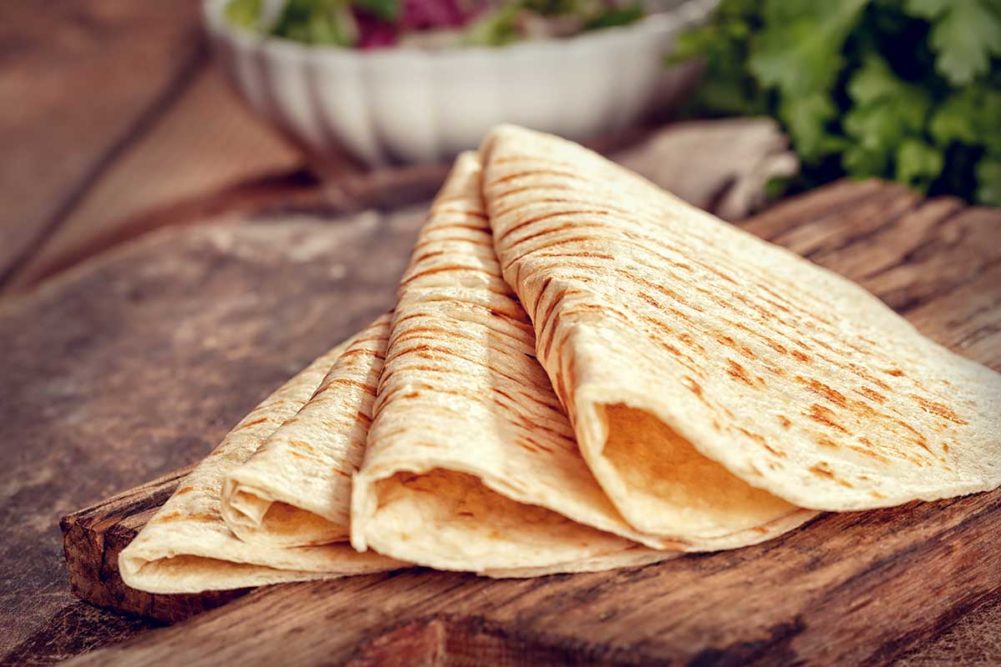Gluten-free and better-for-you (BFY) tortillas and other flatbreads offer different challenges for makers, including doughs that can be difficult to work with. Gluten-free doughs stand alone when it comes to the most challenging doughs, said John McIsaac, vice president of strategic business development, Reiser.
“The consistency can range from liquid to stiff,” he said. “Generally, they are always sticky and do not require rounding. Reiser has designed systems to handle these gluten-free doughs and get them to the press with great scaling and placement. Vegan and low carb also offer challenges due to the stiffness of the product.”
Ken Hagedorn, vice president, bakery sector, Handtmann, said he has yet to see a gluten-free dough that handles like a conventional tortilla dough. For some of these doughs, a depositor may be needed, he said, adding that gluten-free dusting flour is prohibitively expensive so it’s not something most producers use.
Despite the operational challenges these products pose, David Moline, vice president of sales and marketing for Moline Machinery, said the BFY category as a whole seems strong.
“Lower carb, higher fiber formulations are certainly something we’re seeing with customers,” he said. “BFY certainly causes a really wide range of formulations, some of which are suited to traditional tortilla processing equipment. Others like gluten-free maybe are not so much so.”
Because of the wide range of products and doughs, specialty tortillas may require new equipment.
“We always try to help our customers adapt their existing lines,” Mr. Moline said. “We test in our tech center, replicating their process, but the nature of these formulations can be so different than traditional tortillas that you really have to be prepared to accept the fact that your product might require some specialized equipment to handle what you’re trying to make.”
Gluten-free and other specialty doughs can be subject to tearing, so relaxed processing is required. Traditional tortillas use higher protein flour, which creates a strong dough that can handle processing.
“The BFY category — gluten-free, vegan and low carb — tend to be the opposite,” Mr. Moline said. “The lineup of equipment needed to make those is usually entirely different than that of a traditional flour tortilla line. On a traditional flour tortilla line, we can do a lot of sheeting in a very short period of time. You will require more sheeting, especially on a gluten-free line, because you simply can’t reduce the dough with a single reduction station like you can with a traditional flour tortilla system.”
He added that flatbreads like naan or other types encompass a wide range of doughs. Best practices for those vary depending on the product.
“You could categorize something as a flatbread like the sandwich thins that are on the market,” Mr. Moline said. “That could be a drier, higher fiber product all the way to flatbreads that are high hydration doughs that are really more of a ciabatta flatbread. Flatbreads really are a broad category that, depending on the type of flatbread you want to produce, could require very different equipment.”
Producers of tortillas and other flatbreads face a variety of challenges, depending on the products they’re making. But those who choose the right equipment, keep it maintained and carefully manage the doughs to ensure consistency will be able to produce high-quality flatbreads. When buying new equipment, they need to anticipate their needs down the road.
“Think about your potential growth,” Mr. Hagedorn said. “If you’ve got to produce 100 a minute and that’s the only product that you do, don’t limit yourself into thinking that’s all you’ll ever do. Something always comes along.”
This article is an excerpt from the July 2023 issue of Baking & Snack. To read the entire feature on Flatbreads & Tortillas, click here.




